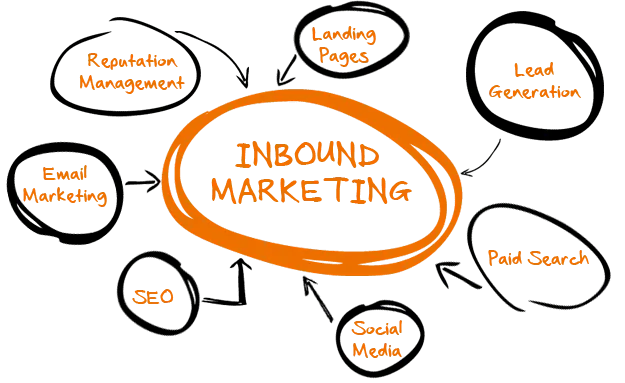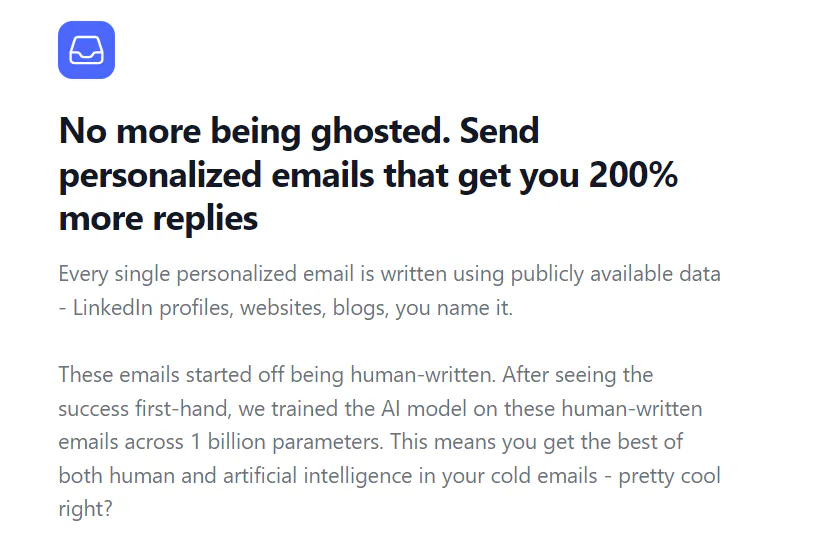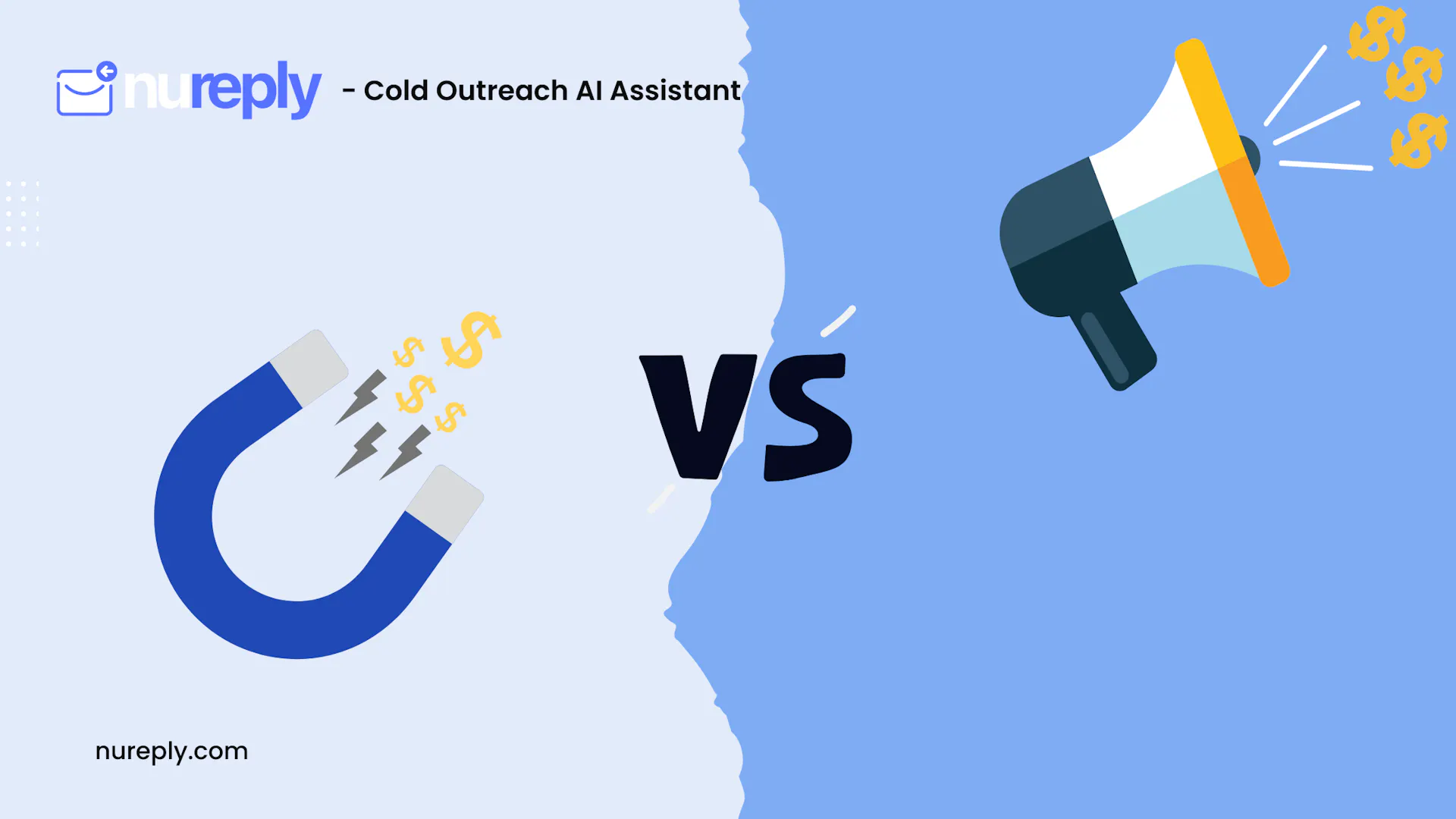Inbound VS Outbound Leads: Differences and Techniques
As a business owner, generating leads is essential for success. But there are so many lead generation strategies available, and many lead generation companies are ready to rip you off. So it’s challenging to determine which ones are the most effective. Two of the most used lead generation strategies are inbound and outbound leads.
Inbound lead generation comes from creating valuable content and search engine optimization (SEO) efforts. Creating content that attracts potential clients is vital here. It helps businesses initiate contact with their target audience.
Thus, generating high quality leads. Outbound leads come through outbound marketing efforts. These can be cold calls, direct mail, and paid ads.
In this article we explore inbound leads vs outbound leads, various inbound and outbound lead generation strategies, and their benefits. We also discuss the importance of lead generation for businesses and reveal how to attract leads to generate more sales conversations.
Whether you are a sales rep or business owner, these strategies will help in your inbound and outbound lead generation techniques and improve your marketing efforts.
What is an Inbound Lead?
As a business owner, you know that having prospects is essential to your success. However, your methods for generating those prospects can impact your overall sales strategy. Inbound leads definition is as simple as customers who are interested in your product or service. These leads have come to you through various channels. These may be social media, search engine marketing, or organic traffic.

These people contact your business voluntarily. This is because they seek information or a solution to a problem. There are many examples of inbound lead generation methods, including social media marketing strategies, SEO, and content marketing
Benefits of Inbound Lead Generation
There are many advantages to using inbound prospects to generate sales. One benefit is that this group is more likely to convert into paying customers. They are also interested in your product or service. So they are further along in the decision making process.
Another benefit of using inbound prospects is that they are generated organically. This means you don’t have to pay Google or social media platforms. You won’t need to spend money to get your business in front of prospective customers. This results in a higher return on investment over the long term.
Finally, using inbound prospects can also improve the productivity of your sales team. You won’t spend time generating outbound prospects through cold calling or other outbound tactics. Your sales team can focus on warm leads that are more likely to convert into paying customers.
What is an Outbound Lead?
Outbound lead generation is where businesses contact a prospective customer to generate sales. This approach involves reaching out to people who may or may not be actively looking for the offered product or service. Outbound methods use telemarketing, direct mail, advertising, and email marketing. The goal is to generate interest in the product or service. Then convert potential leads into customers.
Outbound lead generation methods often involve a proactive approach. This allows businesses to seek out potential customers and engage with them directly.
Some examples of outbound lead generation strategies include telemarketing and direct mail campaigns. There’s also advertising and email marketing.
Telemarketing involves cold calling potential customers. Here, you introduce them to a product or service.
Direct mail campaigns involve sending physical marketing assets to potential customers. These can be brochures, catalogs, or samples. Advertising can take many forms, including print, TV, and social media ads.
Email marketing involves sending promotional emails to prospective clients. Nureply has helped many businesses in this regard. Check out what they’ve got to say about us.
Benefits of Outbound Lead Generation
One advantage of outbound lead generation is the ability to generate leads quickly.
Outbound marketing tactics let businesses reach many potential customers in a short time. This can be especially useful for businesses needing to generate new leads quickly.
Additionally, outbound prospects can help businesses reach a target audience. These are people they may not have reached through inbound marketing strategies. This helps businesses expand their customer base. It generates more leads over a longer period of time.
Inbound and Outbound Lead Generation: Cost Comparison
Are you looking to get prospects but unsure of which method to use? Inbound and outbound lead generation are two popular methods.
But which one is more cost-effective? Let’s compare the costs of both methods.
Cost of Inbound Lead Gen
Inbound lead generation strategies include content creation, keyword research, and social media marketing. Inbound leads for one person could be a waste of effort; reaching out to a larger audience will increase the probability of nailing your prospect. With these techniques, you want to attract many potential clients by optimizing your website for search engines.
Inbound lead generation costs vary depending on your strategy but can range from $20 to $400 per lead. Inbound marketing typically generates a higher quality lead. This is because it targets individuals who are searching for your product or service.
Cost of Outbound Prospecting
Outbound lead generation tactics include cold calling, email campaigns, and outbound marketing techniques. These methods involve reaching out to potential leads.
These are typically through phone calls or email. The cost of outbound lead generation can range from $50 to $700 per lead. Outbound marketing techniques can generate more prospects, but the quality may not be as high.
Comparison of Costs
Yes, outbound lead generation may generate the vast majority of prospects. But it is generally more expensive than inbound lead generation. Inbound leads are less expensive to generate and have a higher conversion rate.
Additionally, an inbound lead will contact you. But an outbound lead requires sales reps to reach out and make contact. Overall, inbound lead generation is more cost-effective and generates a higher-quality lead.
Inbound and Outbound Lead Generation: Lead Quality
Inbound and outbound lead generation have different approaches to lead generation. Let’s compare the quality of leads each approach generates.
Quality of an Inbound Lead Generation
Inbound lead generation involves creating valuable content that attracts possible leads. Inbound marketing is a long-term strategy. It establishes trust and credibility with target audiences.
The quality of inbound leads contact is typically higher than outbound prospects. This is because they are already interested in your product or service.
Quality of Outbound Leads
Outbound lead gen involves reaching out to prospective customers. You can use cold calling, email marketing, and social media marketing methods to generate an outbound lead.
Outbound marketing is a shorter-term strategy. It creates demand for a product or service. The quality of your outbound strategy may be lower than an inbound strategy. That’s because they have not shown interest in the product or service.
Comparison of Quality
Generally, an inbound marketing lead is of higher quality than an outbound lead. This is because they have already shown interest in the product or service.
However, an outbound lead can be a valuable way to generate leads. It also helps you reach a broader audience. The best lead generation tactics incorporate both inbound and outbound methods. This helps you maximize any possible lead.
Inbound vs Outbound Lead Generation: Conversion Rate
Inbound marketing is all about creating content that attracts your ideal customers, while outbound marketing is more of a push approach. But which one is better in terms of conversion rate?
Conversion Rate of an Inbound Lead Generation
One advantage of inbound lead generation is its higher conversion rate. An inbound lead has actively sought out your product or service and expressed an interest in it.
So they are likely to convert into paying customers.
Conversion Rate of an Outbound Lead Generation
Outbound lead generation has a lower conversion rate. An outbound lead has not shown any prior interest in your product or service. Your team is approaching them.
The conversion rate for any outbound lead is typically lower, with an average of around 1.7%. This is because they are often uninterested in your product or service.
Comparison of Conversion Rates
Inbound lead generation is better when comparing the conversion rates of inbound vs outbound lead generation.
Inbound lead generation has a higher conversion rate due to their active interest in your product or service. On the other hand, an outbound lead generation strategy has a lower conversion rate. You generate outbound leads by approaching people who are uninterested in your offer.
Inbound vs Outbound Lead Generation: Lead Nurturing
Lead generation is the first step in turning prospects into paying customers. Once you have prospects, you must nurture them to turn them into customers. This section discusses the lead nurturing process for both methods.
Lead Nurturing for an Inbound Lead
Inbound lead generation attracts potential clients through content marketing and social media. You can also use Google’s search results to reach your target audience.
The key to nurturing an inbound lead is providing valuable content. Your content must address their pain points and interests. This content includes blog posts, white papers, e-books, or webinars.
Lead Nurturing for an Outbound Lead
Outbound lead generation reaches prospective customers through a cold call, email marketing, and advertising. The key to nurturing an outbound lead is personalizing your communication.
Also, provide them with information that is relevant to their needs. This can be achieved through targeted emails, personalized landing pages, or phone calls.
Comparison of Lead Nurturing
Lead nurturing for an inbound and outbound lead differs in approach. Inbound lead nurturing provides value to prospects. But outbound lead nurturing focuses on personalization.
An inbound lead is typically further along in the buying process. This is because they have already expressed an interest in your business. However, an outbound lead may not even be aware of your business.
Conclusion. Which One Is Better?
In lead generation, businesses have two primary options: inbound and outreach marketing. Yes, both methods have their benefits. But deciding which is best for your business depends on your needs and goals.
Inbound marketing is a long-term strategy. It involves creating relevant content to attract potential clients. On the other hand, outbound marketing is a more direct approach. This involves contacting prospective customers through cold emailing, calls, or advertising.
Yes, both channels have their advantages. But outbound lead generation has one key advantage: speed. Cold emailing can be a game-changer if you need immediate clients to grow your business as a startup. With the right approach, cold emails can give you immediate results. This brings more revenue to the table.
But how do you ensure your cold emails are effective? That’s where Nureply’s AI comes in. Using Nureply, you can improve your cold email response rate by 2.4x. That’s a significant increase that can impact your business’s growth.
So, what is Nureply, and how can it help you generate more leads? Nureply is an AI-powered tool. It enables you to personalize your cold emails and increase your response rate. Our tool analyzes your recipient’s behavior and suggests the best time to send your emails. It also suggests what to include and how to follow up.

With Nureply, you can create a lead magnet that attracts the right customers. You will convert them into paying clients. Nureply also helps you optimize your lead flow. It makes sure you don’t miss out on any prospective clients.



